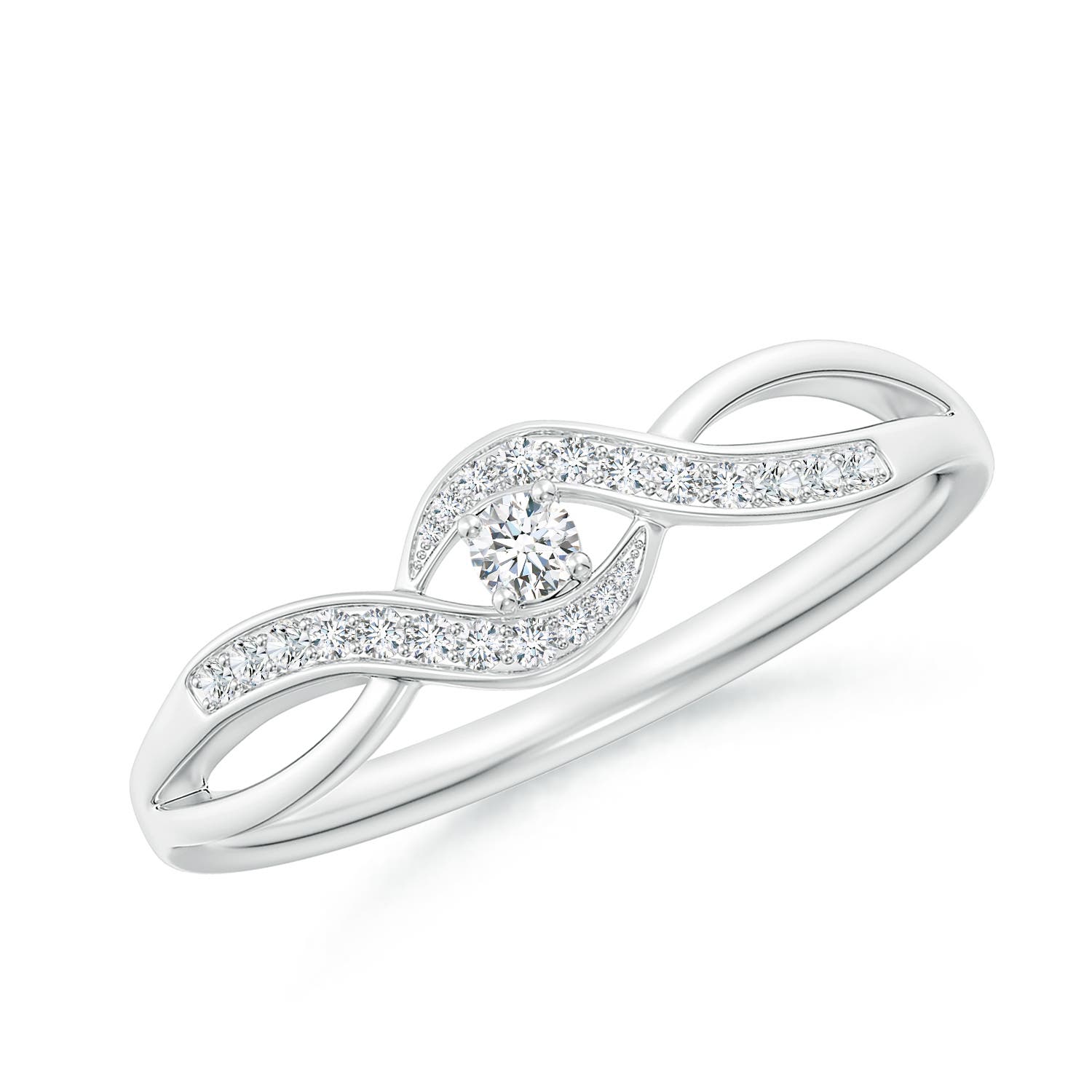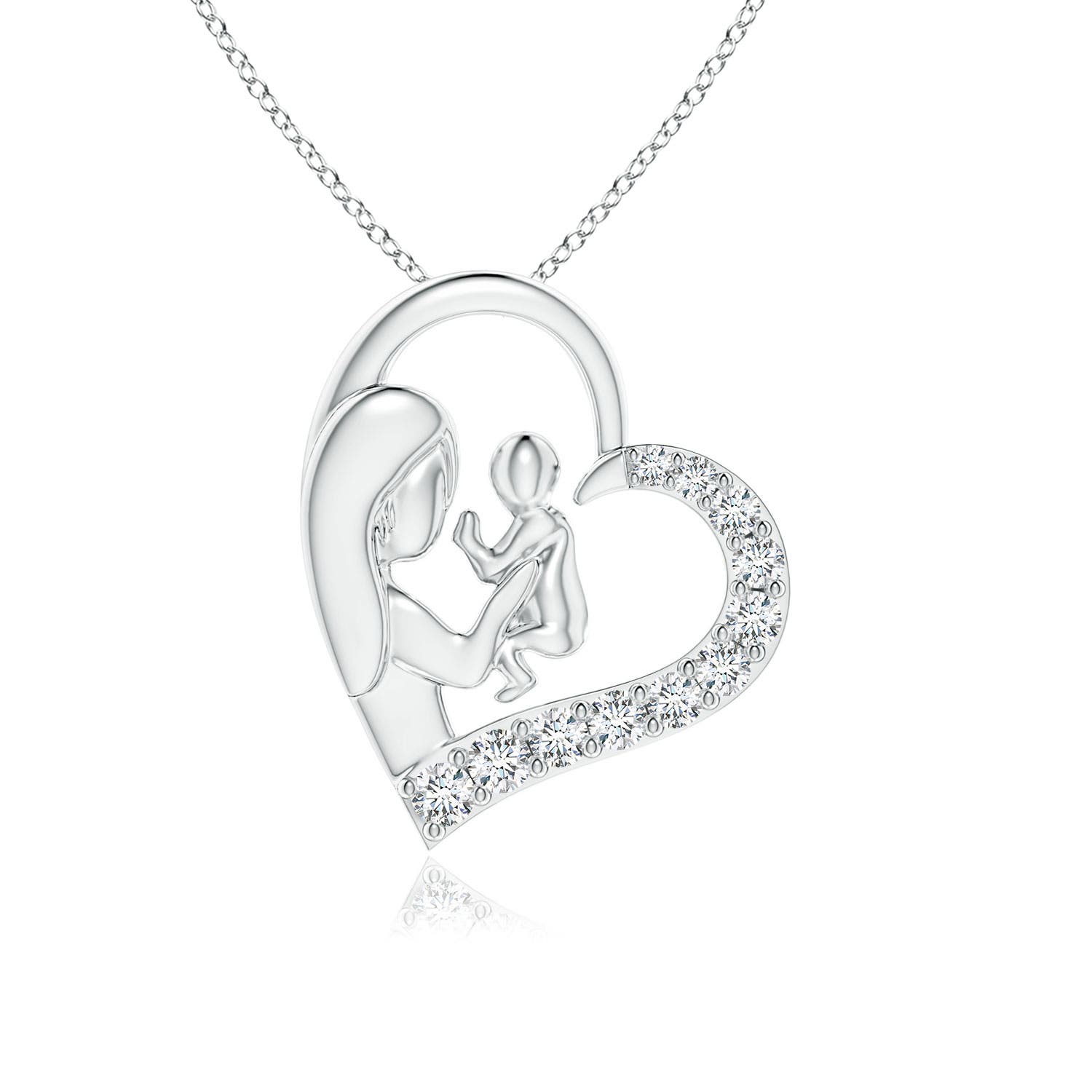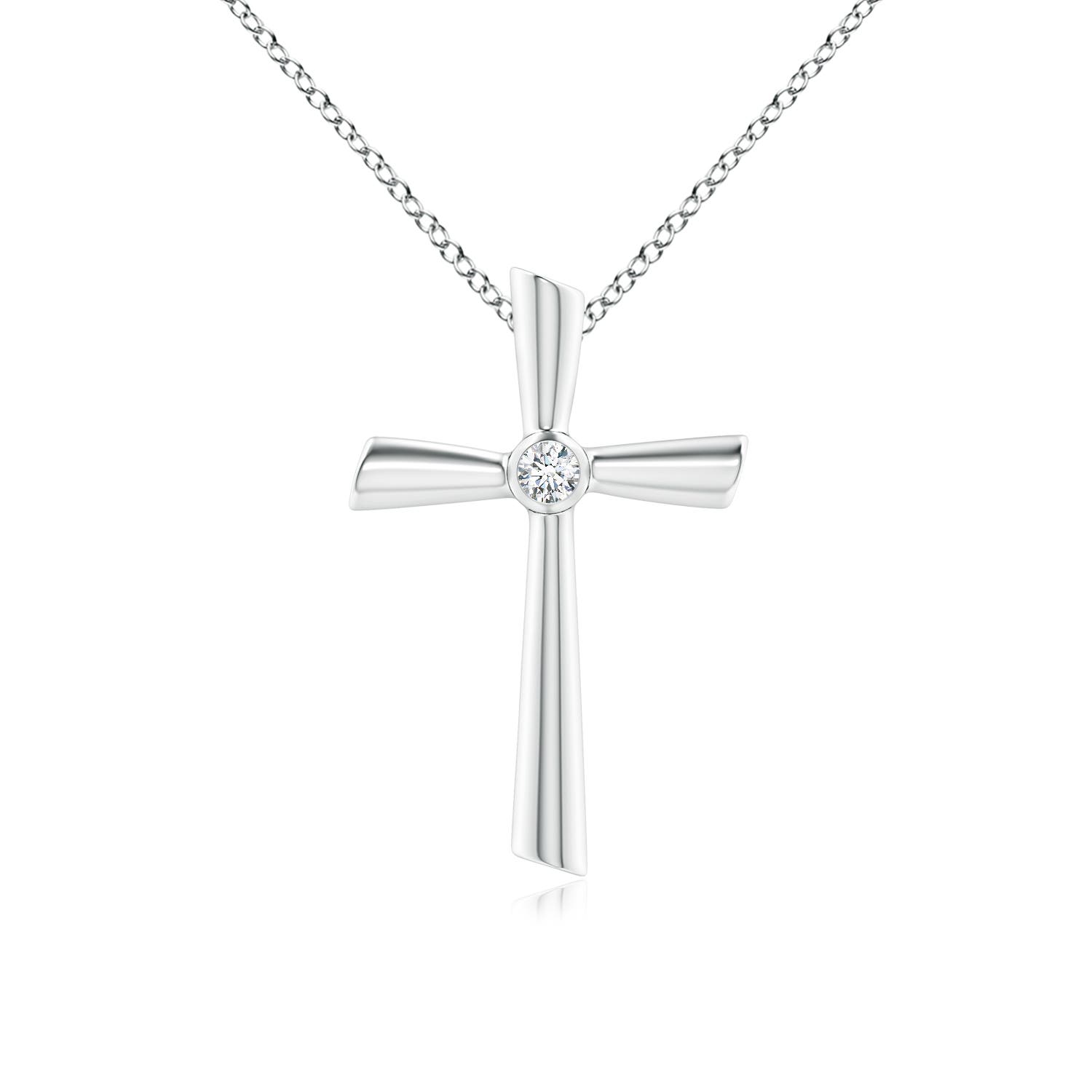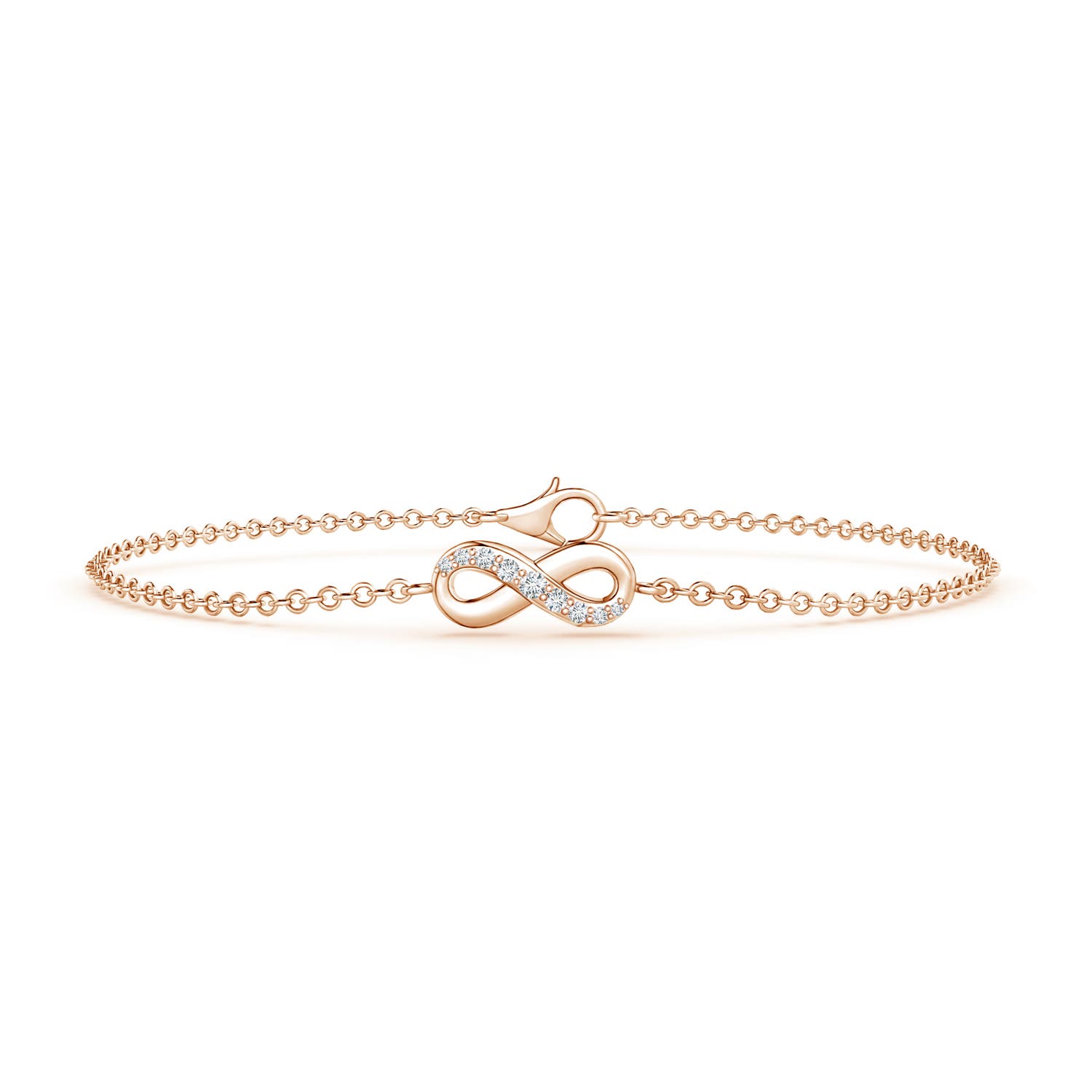Close your eyes and imagine two diamonds – one has a spectacular color and the other a mesmerizing clarity grade! Now imagine being on a tight budget and only being able to choose one jewel – which one would you take home?
While many probably have their answers ready, we’re pretty sure that the majority of you reading this article don’t! If so, you’re in the right place. Because in today’s post we’re going to discuss the different nuances between a diamond’s color and clarity and highlight which one is truly more important when buying diamond engagement rings.
So, grab a chair and keep reading!
Diamond Color vs. Clarity: What Is More Important?
Well, to answer this question, you first need to understand the basic difference between diamond clarity and color.
What Is Diamond Color?
As indicated by the name, a diamond‘s color is nothing but its hue.
For the unaware, this gem is created over several years, deep within the earth’s crust. And unlike other gemstones, it constitutes only one element – pure carbon. Because of this, diamonds are typically colorless.
That said, in many cases, this gemstone may be exposed to certain trace elements during its formation process. These interact with the carbon and actually change the hue of the stone and have resulted in several colored variations being found in the market today. This includes a multitude of shades like blue, brown, yellow, green, etc.
However, needless to say, colorless diamonds still remain the most valuable today.
What Is a Diamond Color Chart?
Believe it or not, even a slight change in hue can drastically alter a diamond’s value. To measure and keep track of the same, each gemstone is graded and placed on the diamond color chart.
Generally speaking, this scale starts with the letter ‘D’ (which means ‘colorless’) and continues all the way down to the letter ‘Z’ (which signifies a light yellow or brownstone).
Every letter grade present here has a clearly defined range of color appearance. During the evaluation process, each gem is placed next to a previously graded diamond and compared under precise viewing conditions and controlled lighting. Based on the differences between the two, the freshly evaluated diamond is then given its final color grade.
Mentioned below are the different grades present on the diamond color chart:
1) D – F
The gemstones that fall within this category are characterized by their colorless nature.
- D – As touched upon before, these gems are absolutely colorless. These are the rarest of the lot and are considered to be exceptionally valuable.
- E and F – These stones look colorless to the human eye. However, they do contain minute traces of color which can be detected by an expert gemologist.
2) G – J
The stones given any of these grades are near colorless.
- G and H – The traces of color within these jewels cannot be detected unless they are compared to other colorless diamonds.
- I and J – Though near colorless, gems placed within this category tend to feature a slightly warm undertone.
3) K – M
These gemstones are characterized by their faint yellow hue.
4) N – R
The gems with these color grades have a slightly more apparent yellow color. Having said that, do note that their hues are still very light here.
5) S – Z
Lastly, the gems that fall within these grade categories have a light yellow or brown hue.
Now that you know a little more about the nuances of this gem’s color grades, let’s discuss its clarity.
What Is Diamond Clarity?
This essentially refers to a stone’s absence of inclusions. It is a qualitative metric that scores the visual appearance of a jewel.
What Are the Different Types of Diamond Inclusions?
Believe it or not, there are several types of inclusions that a diamond can have. However, the main ones that affect its clarity are as follows:
• Cloud
Unlike the other inclusions mentioned in this list, the cloud doesn’t refer to just one flaw – it constitutes many that are clustered together. They are basically small pinpoints that reduce the jewel’s brilliance and give it a somewhat hazy look. Diamonds that have several clouds are known as ‘cloudy diamonds’ and aren’t as valuable as their flawless counterparts.
• Graining
This inclusion is generally caused by irregular crystal growth and occurs in the form of colored, white or reflective lines. It can be further divided into two types:
1) Internal Graining – This occurs deep within the diamond’s structure.
2) Surface Graining – This inclusion exists just below the surface of the diamond.
• Crystal
This inclusion constitutes diamond or other mineral crystals present within the jewel.
While it typically resides inside the gemstone, the knot inclusion, which is a variation of this flaw, features crystals that reach the surface of the gem.
• Twinning Wisp
This type of flaw is considered to be a stone defect. It features a mix of crystals, pinpoints, clouds and feathers and is generally found in fancy diamonds.
• Etch Channel
As indicated by its name, this is a natural channel that develops during the gem’s creation. It is formed due to the extreme heat under which the stone is produced.
• Cavities
These are surface dents that exist on the gemstone. They can appear with or without color depending on the different impurities present within the gem’s structure. It goes without saying that colored impurities are quite visible to the naked eye and can greatly impact the clarity of the gem.
• Pinpoints
Pinpoint inclusions are tiny dots that appear on the jewel’s surface. Depending on the quantity of the same, these flaws can severely impact the clarity of the gemstone.
• Indented Natural
Unlike other flaws which are typically cut or hidden away, these inclusions are consciously left inside the cut gem. This is done by the cutters to show the sellers that they didn’t waste too much of the rough jewel.
An indented natural inclusion resembles a dip and is usually located within the diamond.
• Feathers
As indicated by its name, this inclusion is characterized by several small cracks that look like a feather when viewed from different angles. While some of these are barely noticeable, larger variations can negatively impact the diamond’s shine and can even lower its durability.
Now that you know about the different inclusions a diamond can have let’s move on to the diamond clarity chart.
What Is a Diamond Clarity Chart
Because of the extreme heat and pressure under which they are created, the majority of diamonds present today feature inclusions. These inclusions can greatly impact the gem’s shine and by extension, its value. In order to keep track of the same, every stone is graded based on its clarity and placed on the diamond clarity chart. The evaluator does this by taking into account the relief, size, position, nature and number of inclusions visible under 10x magnification.
The clarity scale constitutes a total of 11 grades ranging between F (Flawless) and I3 (Included – Third Degree). This allows for a more accurate assessment and gives the buyer all the information they need to make an informed decision.
Mentioned below are the different clarity grades:
1) FL (Flawless)
Interestingly, less than 1% of the entire diamond population falls under this grade. This is the highest score that can be given to a diamond and no inclusions can be spotted here – even with a trained eye and a 10x jeweler’s loupe.
2) IF (Internally Flawless)
As indicated by the name, the gemstones within this category have no internal inclusions whatsoever. However, they do feature a few blemishes on their surface.
3) VVS1 & VVS2
These jewels are considered to be nearly perfect. They have minuscule flaws that are extremely difficult to detect under a 10x jeweler’s loupe.
- VVS1 (Very, Very Slightly Included – First Degree) – The inclusions in these gems are very minor.
- VVS2 (Very, Very Slightly Included – Second Degree) – The gemstones present within this category have slightly more flaws. That said, do note that they are still quite minor.
4) VS1 & VS2
Unlike the previous categories, these inclusions are difficult or somewhat easy to find with a 10x jeweler’s loupe. The same really depends on the gem’s sub-grade.
- VS1 (Very Slightly Included – First Degree) – Though large in number, the inclusions present on these stones are quite minor and are very difficult to spot.
- VS2 (Very Slightly Included – Second Degree) – Contrary to the VS1 clarity grade, the minor flaws present here are much easier to find. However, they aren’t visible to the unaided eye.
5) SI1 & SI2
The inclusions found on these diamonds can often be seen with a 10x jeweler’s loupe and a trained eye. The two sub-grades of the same are as follows:
- SI1 (Slightly Included – First Degree) – The diamonds that feature in this grade contain several small inclusions that can be easily found by a professional with a 10x jeweler’s loupe.
- SI2 (Slightly Included – Second Degree) – These gems feature several inclusions – most of which can be spotted from the top of the stone and its pavilion. For the unaware, the gem’s pavilion is the area that’s located below its girdle.
6) I1, I2, I3
These gems are considered to be low-quality. They contain several eye-visible flaws – all of which impact the brilliance and clarity of the diamond.
- I1 (Included – First Degree) – These jewels feature several flaws that can almost be always eye-visible.
- I2 (Included – Second Degree) – The gems have several, prominent inclusions.
- I3 (Included – Third Degree) – Apart from being eye-visible, the inclusions present on/within these gemstones can also impact their durability in the long run.
After learning about diamond color vs. clarity in much detail, we can easily conclude that both the Cs are equally important. Moreover, keeping the right balance between the color and clarity is the perfect way to get the best value out of your money.
How to Opt for the Perfect Stone Based on Diamond Color and Clarity
When it comes to buying a diamond based on these two Cs, you must always keep your budget in mind. Mentioned below are different ways that you can shop for a diamond based on the same.
| Budget | Carat Weight | Color Grade | Clarity Grade |
| Generous Budget | 1 carat | D-F | VS2 or higher |
| Generous Budget | Above 1 carat | F or G | SI1 |
| Tight Budget | Below 1 carat | H-J | SI2 |
1) Generous Budget
If you’re someone with a decisively large budget, pick a 1-carat diamond with a D-F color grade. In terms of clarity, opt for a piece that features a VS2 clarity grade or higher.
Having said the above, if you want to opt for a larger carat weight then choose a gemstone that features at least SI1 clarity grade and falls within the F-G color category.
2) Tight Budget
In contrast to the above, if you’re working with a tighter budget, we recommend opting for a lower-carat gem (below 1 carat) that features an H-J color grade and an SI2 clarity grade.
How to Buy a Diamond Online
Unfortunately, due to the diamond’s extreme fame, several fakes are sold in the market today. To avoid getting duped, we recommend following the tips and tricks mentioned below:
• Research the Seller
We always recommend researching the seller before buying the gem. You can do this by adhering to a series of steps:
- Browse through all the certificates uploaded on a company’s website and make sure that they are up to date.
- Read all the comments under the brand’s social media posts. This will give you a better understanding of the company’s products as well as any issues that may be related to the same.
- Check out the company’s score on popular customer rating websites like Bizrate, for example. If the company scores at least 4/5, then it is most likely credible and we highly suggest shopping from the same.
Angara Says:
Still unsure where to buy your diamond from? Check out our extensive diamond jewelry collection today. Trust us, you won’t regret it!
• Check Out the Company’s Return Policy
This is probably one of the most important things you should do before buying your gemstone. Go through the brand’s return policy with a fine-tooth comb and make sure that it’s an ironclad one that allows you to either return or exchange the product if it’s damaged or differs in any way from what’s shown/claimed online.
• Take It to a Professional
At the end of the day, only a professional will be able to tell you with 100% certainty whether your stone is real or fake. This is simply because they are specially trained to spot the minuscule differences between the two. As such, we highly recommend taking your gem to a trusted jeweler for a second opinion if you have any doubts.
Did You Know?
Diamonds are formed roughly 100 miles under the Earth and are actually brought to the surface through volcanic activity.
How to Take Care of Your Diamond Jewelry
• Storage
For the uninitiated, diamonds are the strongest gemstones available today and feature a 10/10 score on the Mohs scale of mineral hardness. Because of their durability, these gems can scratch softer stones if pushed up against them.
To avoid this, we recommend placing your jewel in a cloth bag or velvet-lined case and storing it separately.
• Cleaning
We recommend cleaning your gem whenever it starts to look dull. And while this may seem like a daunting task, it’s quite easy once you know what steps to follow:
- Start by mixing a small amount of mild soap with lukewarm water in a bowl.
- Next, soak your jewelry in the water for 5 minutes. This will loosen the dirt stuck to the stone and metal.
- After the required time is completed, gently scrub the piece with a soft-bristled brush to remove the dirt. Pay close attention to the edges of your sparkler and its setting as that’s where most of the dirt lies.
- Once done, place your accessory under running water to wash away any excess soap and set it aside to air dry.
Additional Tip: Frequently check your accessory’s settings and make sure that they are secure to avoid any mishaps.
We’ll be the first to admit that buying a diamond isn’t very easy. Having said that, by keeping the diamond’s clarity and color in mind, you’re sure to wind up with a piece that you’ll truly adore.


































